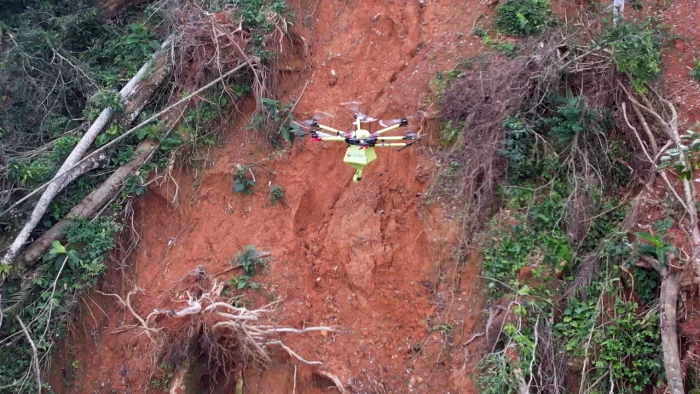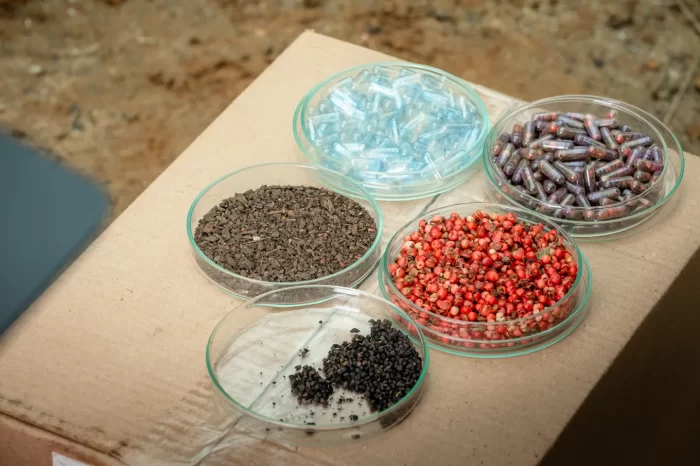
By Writing Team
Posted in August 21, 2023

Hillside between Barra do Sahy and Baleia, showing some of the 693 landslides caused by the February storm (Photo: Coastal Conservation Institute/Press Release)
Aircraft spread seeds over the hills of Barra do Sahy, on the northern coast of São Paulo, devastated by the February storm.
Devastated by storms in February, the municipality of Barra do Sahy, on the northern coast of São Paulo, has become the target of a pioneering initiative that utilizes drones and artificial intelligence to reforest degraded areas.
Nestled between the Serra do Mar mountains and the coast, the Sahy region experienced over 600 landslides during the summer rains, a disaster that resulted in the death of 65 people and the destruction of more than 200 hectares of Atlantic forest.
The recovery process began this August, led by the Coastal Conservation Institute (ICC), an NGO that operates on the beaches of the São Paulo coast, in collaboration with Ambipar.
However, this is not a conventional slope reforestation where seedlings are planted one by one by humans.
Due to the rugged and difficult-to-reach terrain, drones are used to scatter thousands of seeds from the sky.
Seeds from more than 20 native species are enclosed in biocapsules, which are biodegradable capsules made from collagen.
This material would be discarded by the pharmaceutical industry, but now it serves a new purpose.
“Collagen and fertilizer are rich in nutrients such as nitrogen, phosphorus, and potassium, which accelerate the growth of seedlings,” notes environmental engineer Gabriel Estevam from the Ambipar Research Center.

Each drone releases up to 3,000 capsules per trip. With their use, it’s possible to replant between 30 and 50 hectares per day. In the case of Sahy, the rains devastated a total of 300 hectares of forest.
The system created by the company is similar to what nature does with birds.
After consuming plant sprouts, birds spread seeds enriched with nutrients from their droppings, which accelerates the growth process.
The drone-assisted planting is also accompanied by an artificial intelligence software that maps the terrain and implements a flight plan, indicating the exact points where each seed should be dropped.
According to Estevam, the use of technology reduces reforestation costs by up to 50%.
“In the case of Sahy, the recovery is expected to last about two years. And it will take a decade for the local forest to reach its full potential,” Estevam estimates.
The company currently produces 30,000 capsules filled with seeds daily.
They have already tested the effectiveness of the model in areas of the Serra da Cantareira, reforesting riparian forests that are crucial for the balance of freshwater sources in that region.
In the future, the idea is for these biocapsules to be applied in even larger projects, such as conservation and restoration initiatives in the Amazon rainforest.
